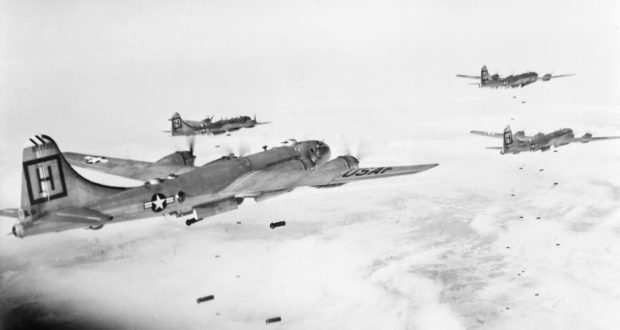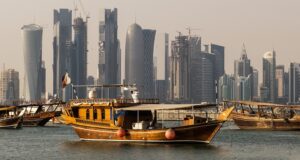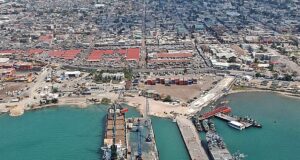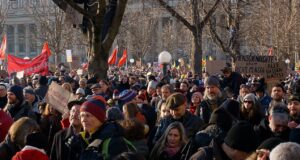June 18th, 2017
By Davis Florick – Senior Fellow
United States strategic bombing during the Korean War was a major factor in repeatedly checking communist advances. Washington’s ability to assert supremacy in the skies over the peninsula played a crucial role both on the battlefield and at the negotiating table. Particularly during the initial North Korean onslaught in 1950 and again during China’s advance from Manchuria in 1951, US airpower was one of the few advantages upon which Seoul, Washington, and their allies could rely. Equally important, strategic bombing focused on economic and infrastructure targets weakened Pyongyang’s ability to prosecute the war, thereby placing greater pressure on Beijing and Moscow to provide material support. To break the stalemate on the frontline, airpower would be further leveraged in 1953 to raise the costs of Kim Il-sung’s continued, failing struggle. Strategic bombing served a needed function for the US and its allies throughout the Korean War. However, since the armistice, North Korea has assiduously incorporated rhetoric about the use of airpower in its anti-South Korean and anti-US propaganda. Knowing that Seoul and Washington would likely attain air supremacy in any future conflict, Pyongyang has attempted to associate US strategic bombing with war crimes as a means to scare its people into remaining loyal to the regime. Understanding both positive and negative elements of airpower during the Korean War is paramount in dealing with the current crisis.
The North-South division of the Korean Peninsula and the broader effort by the communist states to place Pyongyang in a position of strength created an environment conducive to Washington’s reliance on airpower. By the end of World War Two (WWII), Korea had been the beneficiary of nearly a half century of Japanese economic investments. When the state was divided in half immediately following WWII, southern Korea, on the one hand, had been developed as an agricultural region, and while it did not enjoy considerable industrial growth, it retained Korea’s historical capital – Seoul – and the bulk of the population. On the other hand, northern Korea had become a center of heavy industry, blessed with substantial rivers for hydroelectric power, significant mining assets, and a number of desirable port facilities. The colonial economic infrastructure Pyongyang inherited enabled North Korea to develop quickly as an independent state. At the same time, Seoul’s patrons in Washington looked at the new Syngman Rhee government in South Korea with skepticism as the fledgling state struggled to gain popular support. Both the Soviets and Chinese could offer military assistance to Pyongyang with ethnic Korean manpower that had gained experience during the war in the Asia-Pacific. Moscow also provided Pyongyang with armor and other material support. Kim Il-sung’s reliance on a conventional military and a relatively small number of industrial centers gave him an advantage in his confrontation with Syngman Rhee; however, these same capabilities proved to be a liability once the US entered the conflict.
The early bombing campaign over North Korea was focused on targeting ground forces and industrial capabilities. Given that the peninsula is cut by a series of north-south mountain chains, the communist armed forces were funneled into a limited number of routes if they wished to attack the South. This simplified targeting for US and partner aircraft. The use of airpower to slow the communist advance and, more importantly, to degrade logistical and supply lines was crucial. As the North Korean forces in 1950 and the combined communist forces in 1951 advanced south, geographic distance increasingly strained their supply lines. The natural stresses on logistical support that developed were compounded by the US air war. During both offensives in 1950 and 1951, Washington’s use of airpower slowed numerically superior adversaries. Had they taken place before the aviation era, both the North Korean campaign in 1950 and the combined-communist campaign in 1951 would likely have fared much better because airpower would not have benefited South Korea, the US, and their partners.
At the same time, the Truman Administration targeted Kim Il-sung’s industrial capabilities. Cities such as Pyongyang, Chongjin, and Wonsan were repeatedly bombed because of their value as production centers. Consequently, North Korea was forced to rely on its communist partners for even the most basic goods. Regrettably, the US used carpet bombing and napalm munitions to maximize the effectiveness of raids. While these capabilities were undoubtedly successful in neutralizing North Korea’s economy, they inflicted considerable suffering on the civilian population. Later, Pyongyang would exacerbate the negative impacts of Washington’s bombing campaign as a means to engender animosity among the population. Yet, in the short term, the early use of US airpower saved South Korea from disaster.
Once the advances of the first twelve-month period, June 1950-1951, wound down, both sides settled along the front in preparation for a protracted conflict. Nevertheless, US and allied airpower continued to represent a distinct advantage over the communists. Except for a brief period during which the Soviet Union’s best pilots fought in the conflict, the vast majority of Soviet, Chinese, and North Korean pilots were sorely overmatched by their adversaries. In dogfighting, the kill ratios became increasingly lopsided in favor of Washington and its partners. This allowed US and allied bombers to operate with impunity over the Korean skies.
Simultaneously, Washington was ready for a ceasefire. Although the communists had reasserted control over most of North Korea, the US had gained small portions of territory north of the pre-war border. Now, with Washington interested in a negotiated resolution, it had to compel the communists into being amenable to such an agreement. It turned to airpower and, in particular, the bombing of North Korean dams. Seriously degrading Pyongyang’s irrigation system set off a significant food shortage that required outside intervention. From as far away as Eastern Europe, food shipments were sent to North Korea.[1] In no small measure, the campaign against Pyongyang’s dams impressed upon Beijing and Moscow that it was time to negotiate a mutually-beneficial compromise.
In the years following the Korean War, the Kim regime has made the horrors of US strategic bombing a hallmark of its propaganda strategy. Insinuations of intentional murders of civilians, whether by ground forces or via airpower, have become a staple of the North Korean government’s unrelenting war. Certainly there were incidents perpetrated by both sides. Perhaps most notable were political killings committed by North and South Korean forces as the frontlines shifted. However, there is a distinct difference between the “score settling” that occurred among Koreans during the war and the vivid images of US military personnel committing war crimes. Likewise, while Washington did utilize napalm and carpet bombing techniques against the North, Pyongyang has chosen to embellish the historical record with accusations that the US employed chemical weapons. Although the Kim regime has taken stories of US and allied conduct during the war to an extreme, the real tragedy is that in a closed society many North Koreans believe the rhetoric. No matter how outlandish Pyongyang’s propaganda may seem to the outside world, within a closed environment there is a possibility that government distortions have had the desired effect of terrifying its citizens.
The real tragedy underlying the Kim regime’s internal messaging tactics is the potential impacts they might have on the population. Specifically, any sort of bombing effort, even if only done to reduce Pyongyang’s nuclear footprint, might serve to benefit Kim Jong-un. At the loss of a few missiles or nuclear warheads, the government would have the propaganda tools to reinforce its claims of aggression from Seoul and Washington and shore up domestic support. Even worse, the government has conditioned the population to expect US and allied brutality should a second war break out. Similar to the results of the propaganda employed by the Japanese government during World War Two, inciting fear in the domestic population increases the likelihood that civilians will challenge foreign militaries with fanatical resistance. Consequently, any effort to pursue regime change or check the Korean People’s Army may lead to significant, perhaps even unacceptable, casualties for all parties involved. In a sense, the loyalty of the North Korean population could produce a deterrent against South Korean or US military action. Thus, Pyongyang’s aggressive propaganda machine has created a complex and insidious environment where even North Korean provocations, followed by a South Korean and US response, could advance Kim Jong-un’s agenda.
Unfortunately, Pyongyang has laid down a potential foundation for broad domestic opposition to any outside aggression against the regime. The challenge for Washington and Seoul is determining the degree to which the Kim government has been successful in its propaganda efforts. US and allied strategic bombing and broader military actions during the Korean War are very difficult for international experts to debate. Other aspects of Pyongyang’s propaganda machine, such as its assertions that life in North Korea is much better than life in the South, can be eroded through simple television imagery. The complexities surrounding the war crimes issue is much more difficult. Should Seoul and Washington ever choose to take military action against Pyongyang, a great deal of time and energy will need to be devoted to eroding the themes North Korea has pressed for over half a century. Doing so will be instrumental in minimizing popular support for Kim Jong-un and resistance against South Korea and the US.
[1] Armstrong, Charles. (2013). Tyranny of the Weak: North Korea and the World, 1950-1992. Ithaca, US: Cornell University Press.
Image: B-29s of the 98th Bomber Grou attacking target in Korea 1951 (Sources: USAF)
 Human Security Centre Human Rights and International Security Research
Human Security Centre Human Rights and International Security Research




